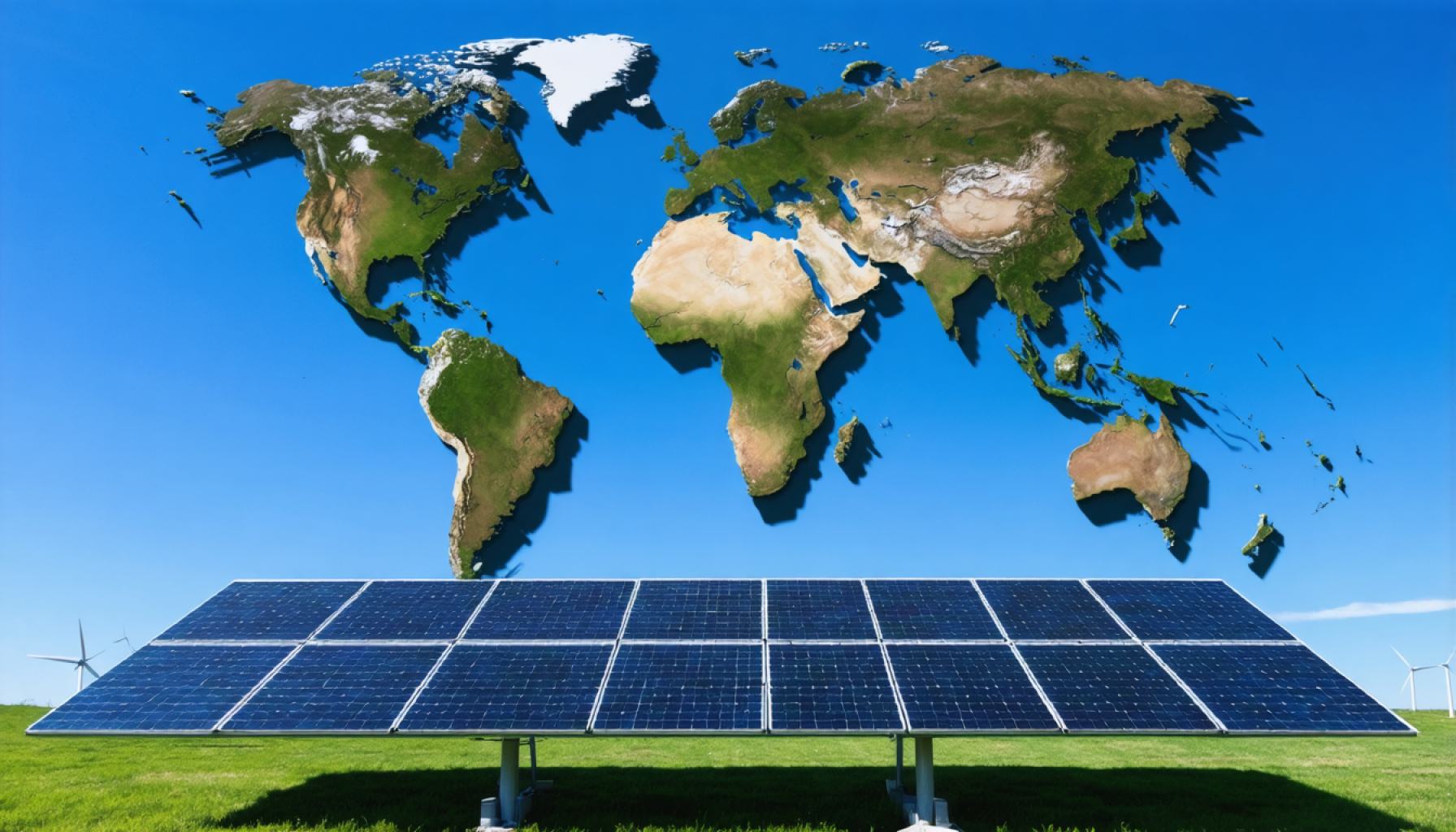- The Global South is experiencing a sweeping transition towards renewable energy, with investments in clean energy now seven times higher than those in fossil fuels.
- Nations across Latin America, sub-Saharan Africa, and Southeast Asia are outpacing the Global North in solar and wind energy adoption, with solar and wind shares growing at an average rate of 23% annually.
- Sub-Saharan African countries lead with significant increases in solar electricity generation, doubling the share compared to the US, while Latin America and Southeast Asia show rapid progress.
- Twelve African countries unveiled ambitious energy compacts at a summit in Dar Es Salaam, supported by over $50 billion in funding from international institutions by 2030.
- Local initiatives and decreasing solar panel costs (down 35% in 2024) drive this transformation, showcasing the Global South’s leadership in the global energy transition.
A whirlwind of transformation is sweeping across the Global South, as nations from Latin America to Southeast Asia pivot decisively towards renewable energy. In a dramatic pivot from fossil fuels, investments in clean energy have skyrocketed—now outpacing fossil fuel investments by sevenfold, a stark contrast to the 50/50 investment split a mere decade ago.
This energy renaissance is reshaping entire continents and challenging preconceived notions held by wealthier nations. A new energy report unveils this sweeping shift: the Global South is outstripping the Global North and even giants like China in the race towards solar and wind dominance. Across the spectrum, these nations are adopting renewable sources faster, with the share of solar and wind improving annually at an astonishing average rate of 23%, double the pace of their northern counterparts.
Midway through this expansive transformation, a remarkable pattern emerges. One-fifth of countries within the Global South have surpassed global powerhouses in critical solar and wind statistics, with sub-Saharan Africa leading the charge. In these countries, solar-generated electricity claims a remarkable position—its share more than doubling that of the United States. Meanwhile, Latin America’s momentum rivals that of China, and Southeast Asia isn’t far behind.
The recent summit in Dar Es Salaam encapsulates the vigor of this movement. Here, twelve African countries revealed ambitious national energy compacts, outlining precise objectives to beef up infrastructure and draw in private sector participation. Amidst these developments, international financial institutions have pledged upwards of $50 billion in funding through 2030, fueling an energy revolution that shows no signs of abating.
The driving force behind these seismic shifts? Local action and determination. African nations are harnessing every ray of sunlight, as evidenced by satellite images capturing solar panels sprawled across Pakistan’s rooftops. In Tanzania, electricity access has surged from 14% in 2011 to 46% in 2022—a testament to the relentless march towards renewable solutions. And in Barbados and Namibia, Chinese-made solar panels have nearly doubled the capacity of their national grids in mere years.
As panel costs plummet by 35% in 2024 alone, the momentum builds, underscoring a pivotal reality: the Global South is not just participating in the energy transition; it is leading it. The takeaway is clear—by embracing innovation and seizing local opportunities, these nations are not only illuminating their own prospects but are lighting the way for a cleaner, more sustainable tomorrow.
The Energy Revolution: How the Global South is Leading the Way
Introduction
The Global South’s impressive transition to renewable energy is capturing the world’s attention. At the heart of this transformation is a massive increase in investments in clean energy sources, greatly surpassing the investment in fossil fuels. This trend indicates a promising future for sustainable development in these regions, setting a pioneering example for the rest of the world.
How-To Steps & Life Hacks for Embracing Renewable Energy
1. Assess Your Energy Needs: Conduct an energy audit to understand your current usage and potential savings from switching to renewable sources.
2. Explore Local Incentives: Many governments offer subsidies and tax incentives for renewable energy installations. Research these opportunities to maximize your investment.
3. Choose the Right Technology: Depending on your location and energy needs, select solar, wind, or hydroelectric solutions that suit your environment.
4. Partner with Reliable Providers: Work with reputable companies for installation and maintenance to ensure efficiency and longevity of your renewable energy systems.
5. Monitor and Optimize: Use smart systems to monitor energy production and consumption, allowing for adjustments to optimize efficiency.
Real-World Use Cases and Insights
– Sub-Saharan Africa: Countries like Kenya have embraced geothermal energy, with geothermal plants contributing significantly to their national grids, reducing reliance on imported fuels.
– Latin America: Chile has emerged as a leader in solar energy harness, with its Atacama Desert being one of the world’s richest sources of solar power.
– Southeast Asia: The Philippines and Indonesia are increasingly utilizing geothermal and wind energy, respectively, due to their ideal geographic conditions.
Market Forecasts & Industry Trends
– Investment Growth: The renewable energy market in the Global South is expected to grow by over 15% annually, with countries like India and Brazil leading the charge.
– Technology Advancements: Innovations in battery storage and energy efficiency are projected to decrease overall costs and increase accessibility in rural areas.
Controversies & Limitations
– Infrastructure Challenges: Some regions face logistical hurdles in building necessary infrastructure for energy distribution, particularly in remote areas.
– Political and Economic Stability: Political instability or economic fluctuations in some nations could potentially impact growth and international investments.
– Dependence on External Technologies: While many technologies are imported from countries like China, there is a growing movement toward local manufacturing and capability development.
Features, Specs & Pricing
– Solar Panels: Current high-efficiency solar panels can convert up to 23% of sunlight into electricity, with costs expected to drop significantly.
– Wind Turbines: Modern turbines generate more power at lower wind speeds, making them suitable for more regions.
– Geothermal Systems: These systems provide a steady power supply, require less land than solar and wind, but have higher initial costs.
Pros & Cons Overview
Pros:
– Environmentally friendly, reducing carbon footprints.
– Reduces dependency on non-renewable energy sources.
– Potential for job creation and economic growth.
Cons:
– High initial setup costs.
– Weather dependency for energy sources like solar and wind.
– Need for technological expertise and ongoing maintenance.
Conclusion
The Global South’s ambitious shift toward renewable energy is set to redefine the future of global energy. As countries in these regions embrace innovation and capitalize on local opportunities, they illuminate paths not only for themselves but also for a cleaner and more sustainable tomorrow. Immediate actions you can take include conducting an energy audit and exploring local incentives for sustainable energy investment.
For more insightful articles and updates on renewable energy and global transformations, visit World Bank and International Energy Agency.










